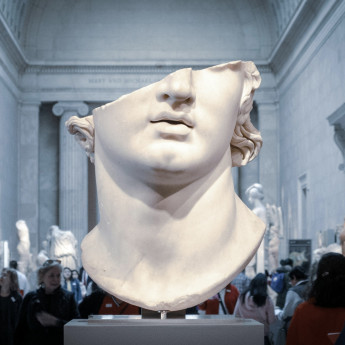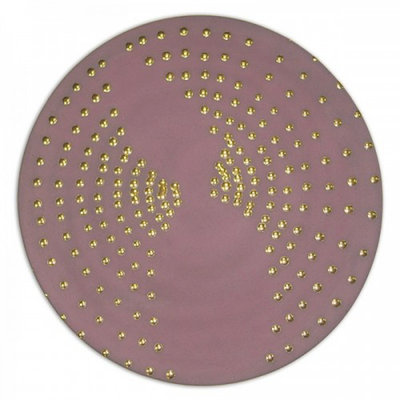
Details
Artist
Styles
Small metal plate in front of coloured panel - Signed and numbered on a label affixed to the reverse // Rafael Jesus Soto’s Homenaje al Humano is a mixed-media sculpture that explores the dynamic relationship between form, space, and viewer perception. The work consists of a grid of black metal plates arranged in front of a striped background, with one distinctive orange plate disrupting the uniformity. The interplay of light and shadow across the surfaces of the plates creates a kinetic effect as the viewer moves around the piece, making the composition seem to shift and change with each new angle. Soto’s use of geometry, minimalism, and optical illusions invites the audience to actively engage with the work, creating a dialogue between the physical structure and the perceptual experience. The single orange plate serves as a focal point, offering a subtle yet powerful contrast to the monochromatic elements. This work, signed and numbered on the reverse, exemplifies Soto’s commitment to kinetic and optical art, where movement and perception are key components.
Homenaje al humano, 1976
form
Medium
Size
50 x 66 X 14 cm
- Inches
- Centimeters
Edition
Price
Details
Artist
Styles
Small metal plate in front of coloured panel - Signed and numbered on a label affixed to the reverse // Rafael Jesus Soto’s Homenaje al Humano is a mixed-media sculpture that explores the dynamic relationship between form, space, and viewer perception. The work consists of a grid of black metal plates arranged in front of a striped background, with one distinctive orange plate disrupting the uniformity. The interplay of light and shadow across the surfaces of the plates creates a kinetic effect as the viewer moves around the piece, making the composition seem to shift and change with each new angle. Soto’s use of geometry, minimalism, and optical illusions invites the audience to actively engage with the work, creating a dialogue between the physical structure and the perceptual experience. The single orange plate serves as a focal point, offering a subtle yet powerful contrast to the monochromatic elements. This work, signed and numbered on the reverse, exemplifies Soto’s commitment to kinetic and optical art, where movement and perception are key components.
- Recently Added
- Price (low-high )
- Price (high-low )
- Year (low-high )
- Year (high-low )
What is the Zero Movement?
ZERO was an art movement founded by Otto Piene and Heinz Mack, aiming to develop into a large international and cross-border movement. The name ZERO originated from a magazine founded by Heinz Mack in 1957, which became a platform for the group's ideas. The magazine was published for several years before ceasing in 1967. The ZERO movement sought to create a new beginning in art, emphasizing light, space, and movement, and became influential in post-war European art.





























